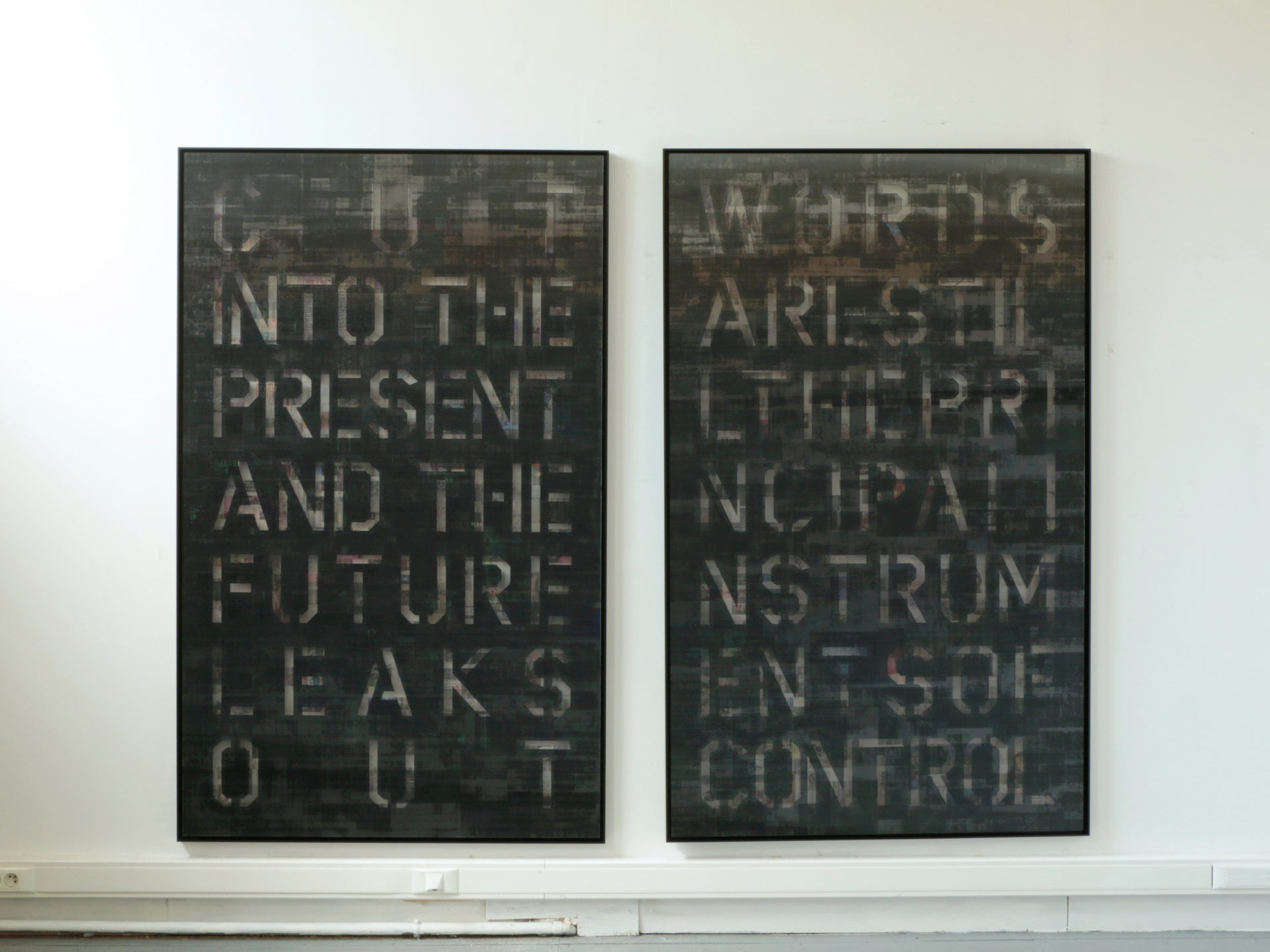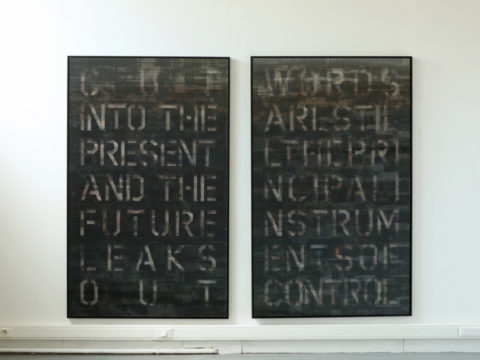Send this
to a friend
Message sent.
Carregando...
Meta Google confronts the legacy of American author William Burroughs (1914-1997) in relation to Google, the company that symbolizes the current global digital capitalism, in order to question our connection to digital picture proliferation. Pascal Dombis uses Google search in his creative process because he considers it to be the most accessible visual representation of how algorithms, mega data and artificial intelligence are affecting and impacting our lives today. To this end, he has collected thousands of images found by searching the word google on Google itself, in different languages, over many years.
When he started this project, the artist discovered that the images that emerged were related to two different and opposite themes. Many of them were the company’s marketing items – logos, products, and corporate events – in addition to Google’s own activities, such as automatic learning, virtual reality and biotechnology. However, there was also a set of images linked to this search that could be classified as being anti-Google, including jokes and activism against global surveillance, digital capitalism and the Internet itself.
Of the thousands of “google” images collected by means of the company’s search engine, a random selection is printed in lenticular material and nailed to black metal plates. Lenticular printing has a great amount of images and produces a surface full of unexpected visual effects. Using an excessive number of images, the artist maximizes conditions for visual accidents to occur and allows for inaccuracies, shakiness and chance, in addition to toying with the visitor’s gaze.
Depending on the person’s position, the experience is never the same. Digital images are quite different from the conventional reading that the retina does of images. Images are circular and in constant flux; the visitor’s gaze becomes increasingly dynamic, as there is no more distance between images, we’re immersed in them and deep into digital images. The lenticular material also questions the new paradigm regarding the reading of images, bringing an experience related to time and space where the visitor needs to move in order to see.



